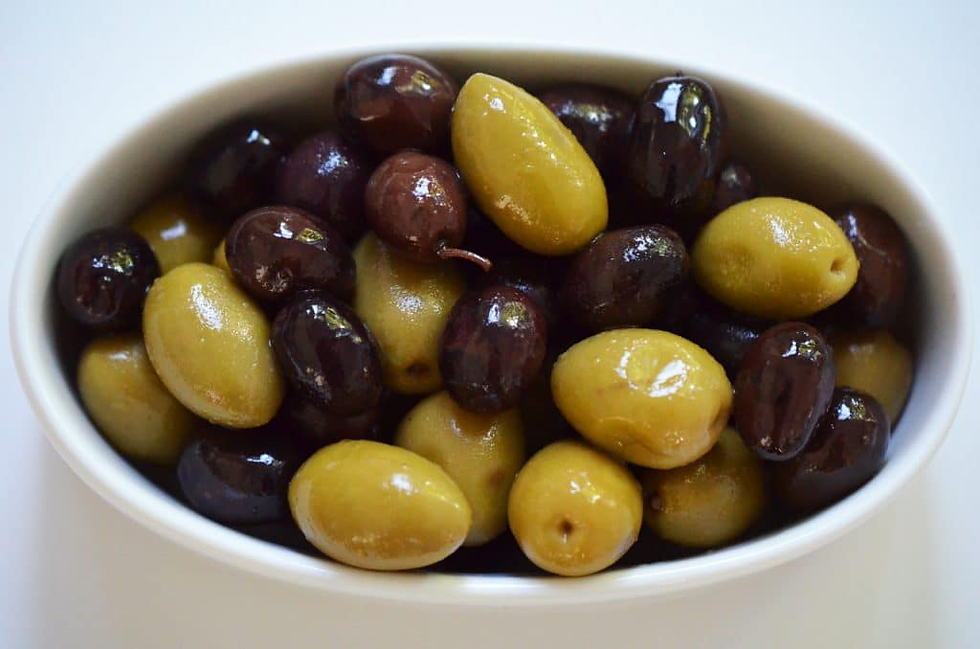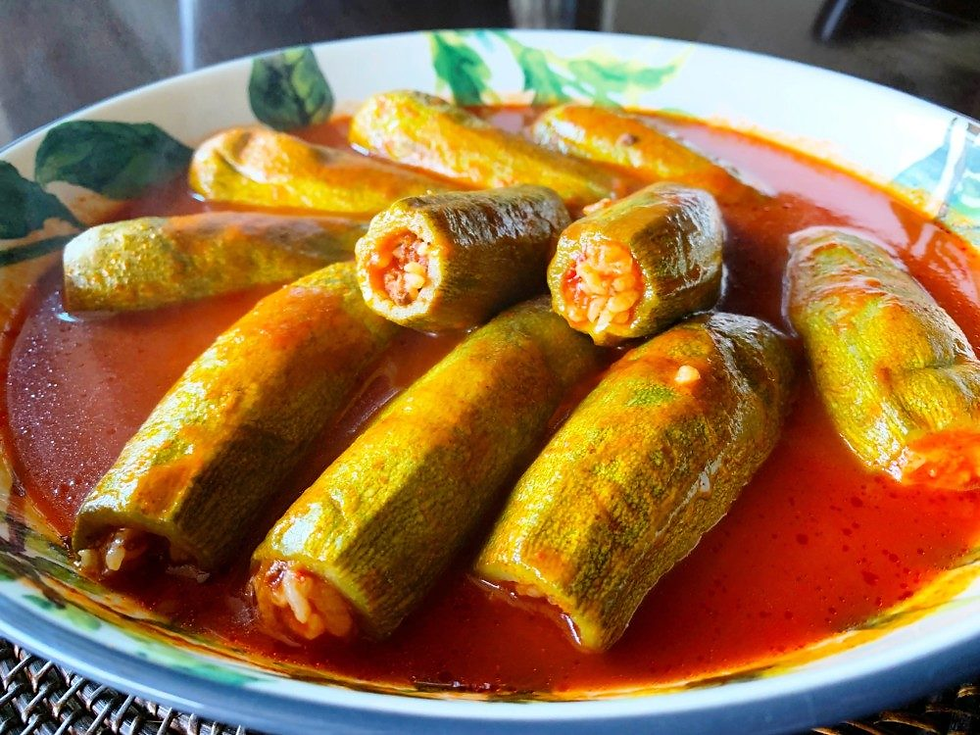Lebanese Mealtime 101
- Deena Aboul-Hassan
- Apr 7, 2024
- 3 min read
Updated: Apr 13, 2024
Setting a Lebanese table involves creating an inviting and generous spread of dishes that showcase the rich flavors of Lebanese cuisine. Here's a step-by-step guide to setting a traditional Lebanese table:
Setting the Table
Tablecloth: Start by laying a clean tablecloth on the table. Choose a vibrant color or pattern to add to the festive atmosphere.
Plates: Use large, round plates or platters for serving main dishes and smaller plates for individual servings of appetizers and soups/salads.
Bowls: Provide bowls for dips, sauces, and salads. There should also be a bowl/small dish to throw away food scraps.
Silverware: Include forks, knives, and spoons for each guest.
Napkins: Cloth napkins add an elegant touch, but paper napkins are also acceptable.
Glasses: Set out water glasses for each person
Must-have food items at the table (these are non-negotiable!!)
Olive oil - in a small pitcher like this!
Salt and peper - in a double open cellar
A variety of olives - both green and black seeded olives!
And of course, pita bread!!
Appetizers (Mezze)
Lebanese meals typically start with a variety of small dishes called mezza. After you set the table, arrange these appetizers on the table before the main courses. Common mezze dishes include:
Hummus
Baba ghanoush (roasted eggplant dip)
Tabouleh (parsley salad)
Fattoush (salad with toasted bread)
Labneh (strained yogurt)
Za'atar (herb dip made with dried thyme, sesame seeds, sumac, salt, and olive oil)
Falafel (fried chickpea patties)
Warak enab (stuffed grape leaves)
Kibbeh (ground meat and bulgur wheat)
This picture is a good example of all of these foods at one table!
Main Course
After enjoying the appetizers, serve the main course. Lebanese main dishes often feature grilled meats, rice, and vegetables. Popular main courses include:
Shish tawook (grilled chicken skewers)
Kafta kebabs (grilled ground meat skewers)
Shawarma (rotisserie meat)
Kibbeh bil sanieh (baked kibbeh)
Kousa Mahshi (stuffed zucchini)
Dessert
Finish the meal with a selection of Lebanese desserts or fresh fruit. Lebanese people typically eat seasonal fruits such as apricots, cherries, and cactus. Along with a cup of tea and turkish coffee, some popular Lebanese sweets include:
Baklava (layers of phyllo pastry filled with nuts and sweetened with syrup)
Ma'amoul (shortbread cookies filled with dates or nuts)
Atayef (stuffed pancakes)
I, unfortunately cannot savor in these desserts due to my allergies, but Meghli, a cinnamon-spiced rice pudding is a traditional Lebanese dessert that my mom makes for me. In fact, this dessert is most popularly served to celebrate the birth of a new child in a family. When family and friends come over to see the new child, this pudding is served in individual bowls topped with a variety of nuts and shredded coconut. Obviously, I cannot eat it with nuts, but I love to top it with some almonds and cococut, or even eat it on it's own!
The picture here on the left is meghli that my mom made - it is a very artistic dessert!
Hospitality
Now that you are an expert on how to set up a Lebanese meal, there are some cultural mannerisms that you should follow. The Lebanese express their love most often through food, and you will be offered to try a variety of foods by the host; you are expected to try all of the foods at the table (unless of health reasons like me haha).
It is common for the host or hostess to urge their guests to have multiple servings. Having second servings shows that you are enjoying their hospitality. Therefore, serve yourself less on the first helping so you don’t fill up and are able to show the good gesture of accepting multiple!
The Lebanese socialise around meals for long periods of time. If invited for lunch, guests usually stay past 4pm. Those invited for dinner are expected to remain all evening, and it would be inappropriate to leave directly after the meal.
Always thank the family/host that made the food. Especially if they are a teta (grandmother). They most likely spent all day cooking and are rather exhausted (even if they don't show it!).
Here are some pictures of the food spread from parties that my family have hosted!



























Comments